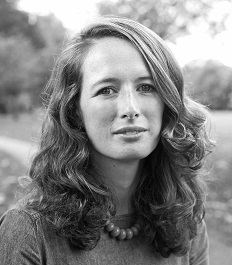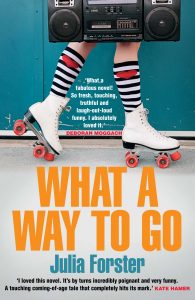Writing And Bad Habits
 My Twitter biography reads “seriously trying to avoid caffeine and adverbs; succeeding in neither”. Over the years I’ve tried most tactics to motivate and fuel myself to write.
My Twitter biography reads “seriously trying to avoid caffeine and adverbs; succeeding in neither”. Over the years I’ve tried most tactics to motivate and fuel myself to write.
Back in 2005, when I was writing the first draft of what became my coming-of-age novel What a Way to Go, I went on a one-week writing retreat in Paris to stay with friends. I can trace my dependency on caffeine blow-outs back to this sojourn; I wrote a brain-addled 8,000 words a day over a five-day period. I came back to Britain with over 40,000 words of my initial first draft, having written most of this in a Parisian café which played Euro-pop on loop. I alternated my choice of beverage between espressos and Coke. I also cringe to recall I pretty much chain-smoked Malboro Reds. I must have been the over-caffeinated house guest from hell.
Another trick I tried, later that same year, was to spend £20 on penny sweets (that included postage, I hasten to add). But even accounting for a generous estimate of £5 for p&p, I must have bought in excess of one thousand penny sweets! This had the added advantage of propelling me back into my 1980s childhood when I spent my 35p pocket money each Friday at the local corner shop on Fruit Salads, Kola Kubes and Space Dust. Luckily, my molars have survived that time pretty much intact.
These days, I favour fuelling my writing sessions with something a little more wholesome.
I am still a fan of a strong coffee; a well-timed Lavazza is my secret weapon. If I have a deadline or want to nail a particularly thorny scene, I will dose up and let loose on the keyboard. But in between times, I also try to walk up Cadair Idris, the local mountain range here in mid-Wales, at least once a fortnight. Along with attending a weekly Ashtanga yoga class which is particularly bendy and the odd spinning class, this means that, when I do come to sit down at my desk to write I have energy naturally coursing through my veins rather than me needing to rely on caffeine or sugar for that instant energy boost.
How to fuel your writing sessions is one thing, but how to stick to a regime without self-sabotaging or procrastinating is another matter altogether, of course.
An early adopter of Facebook in 2005, I spent less than a year on the site. I found that I had the tendency to incline towards comparing myself to my peers and that this was unhelpful not least because, at the time, I was the first among my family and friends to have children. I found that the constant stream of images of house parties that I was missing out on, which I’d often click on while nursing my baby to sleep in the middle of the night, only served to diminish my sense of well-being. I’ve never re-joined the platform, and don’t regret that decision for a minute. I can’t begin to imagine how many cumulative hours that decision has freed up in my life since.
On the contrary, I was late to the party with Twitter – I joined in 2012 and I’ve found it to be an amazing tool for discovering opportunities and for connecting with other authors. But here I’ve had to be careful to keep some kind of “digital hygiene” programme. The only effective method I’ve found is to take the odd Twitter break to free up that part of my mind – especially when I’m either deep into a writing project or in the early phases where the synapses are gearing up to fire again.
The distraction of social media is a curse to many a writer. Perhaps the best solution to this kind of procrastinatory activity that I have seen comes from the writer, actor and film-maker Miranda July. Watch this video “A Handy Tip for the Easily Distracted” and I promise that the next time you’re reaching for your mobile phone in the throes of crafting your prose or poetry you’ll stop and think (and smile): http://www.openculture.com/2012/10/miranda_julys_short_film_on_avoiding_the_pitfalls_of_procrastination.html
Finding the right physical space to write has proven something of a challenge. While on a mini-sabbatical from writing over the summer (these I find really helpful for gaining perspective on a project you’ve been involved with for some length of time) I realised that my usual routine of spending each Monday at a copyright library were actually inhibiting rather than encouraging my creative practice. A close friend and fellow writer intuitively rationalised that somehow, by surrounding myself with those dusty tomes, it was sabotaging my attempts at self-expression. There was also the issue of a man who was often in the library at the same time as me who had a persistent cough that sounded like he had a squirrel trapped in his larynx.
So, I’ve ditched the “silent” hallows of the copyright library in favour of my local municipal library where people can speak freely, babies chew on board books and there’s a constant rustle of people flicking through the local rag. I sometimes even re-fuel at the local café for a double-shot flat white, too…
—
About WHAT A WAY TO GO
 1988. 12-year-old Harper Richardson’s parents are divorced. Her mum got custody of her, the Mini, and five hundred tins of baked beans. Her dad got a mouldering cottage in a Midlands backwater village and default membership of the Lone Rangers single parents’ club. Harper got questionable dress sense, a zest for life, two gerbils, and her Chambers dictionary, and the responsibility of fixing her parents’ broken hearts…
1988. 12-year-old Harper Richardson’s parents are divorced. Her mum got custody of her, the Mini, and five hundred tins of baked beans. Her dad got a mouldering cottage in a Midlands backwater village and default membership of the Lone Rangers single parents’ club. Harper got questionable dress sense, a zest for life, two gerbils, and her Chambers dictionary, and the responsibility of fixing her parents’ broken hearts…
Set against a backdrop of high hairdos and higher interest rates, pop music and puberty, divorce and death, What a Way to Go is a warm, wise and witty tale of one girl tackling the business of growing up while those around her try not to fall apart.
What a Way to Go is published by Atlantic Books and is £6.99 in paperback
https://twitter.com/WriterForster
Category: How To and Tips






























